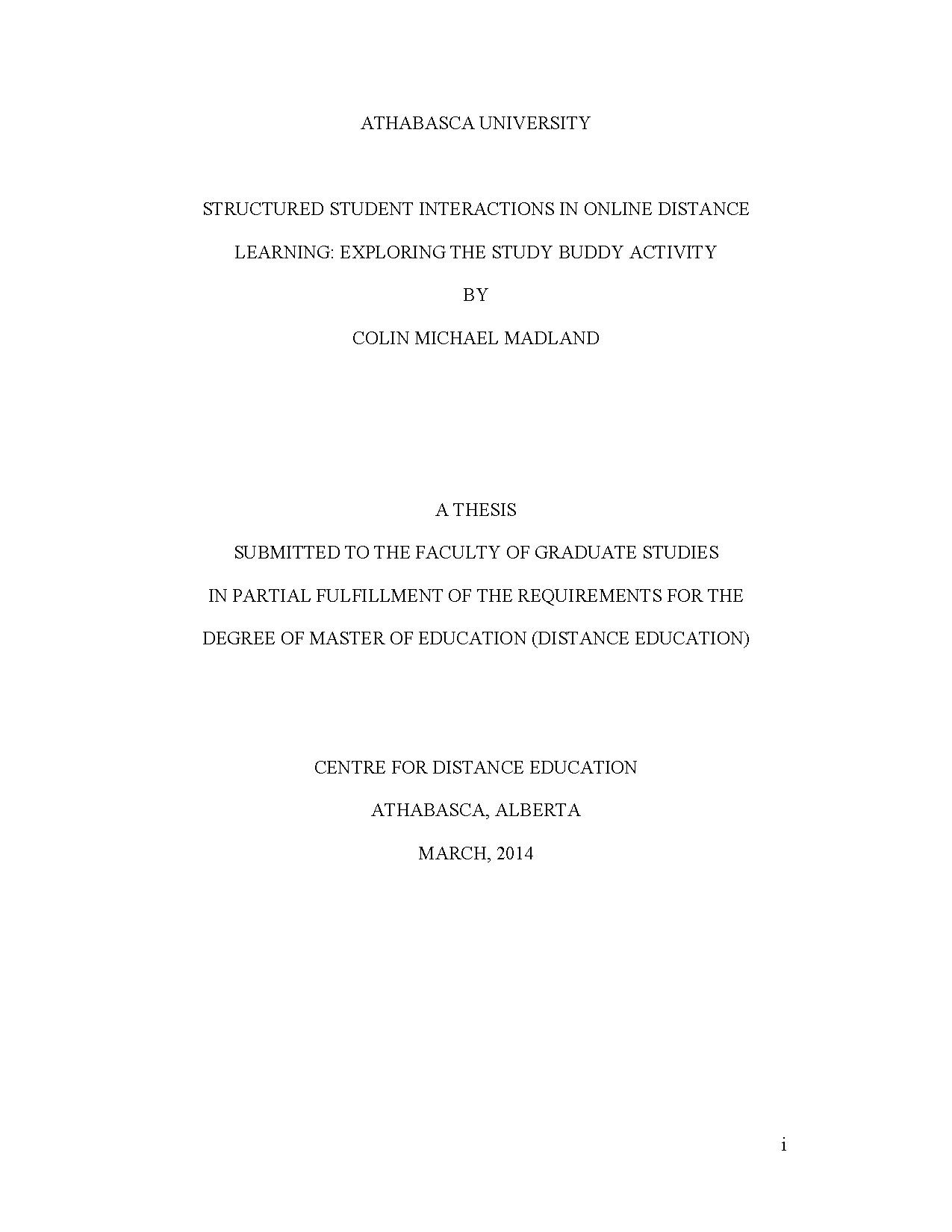Difference between revisions of "OLFM Workshop/Planning/Track 4"
Jump to navigation
Jump to search
ColinMadland (talk | contribs) |
ColinMadland (talk | contribs) |
||
| Line 15: | Line 15: | ||
*Biggs, J., Kember, D., & Leung, D. Y. P. (2001). The revised two-factor Study Process Questionnaire: R-SPQ-2F. British Journal of Educational Psychology, 71, 133–149. doi:10.1348/000709901158433 | *Biggs, J., Kember, D., & Leung, D. Y. P. (2001). The revised two-factor Study Process Questionnaire: R-SPQ-2F. British Journal of Educational Psychology, 71, 133–149. doi:10.1348/000709901158433 | ||
*Biggs, J., & Collis, K. (1982). Evaluating the quality of learning: The SOLO taxonomy. New York: Academic Press. | *Biggs, J., & Collis, K. (1982). Evaluating the quality of learning: The SOLO taxonomy. New York: Academic Press. | ||
| − | *Madland, C (2014) Structured Student Interactions in Online Distance Learning: Exploring the study buddy activity. Unpublished master's thesis, Athabasca University [[File:Structured Student Interactions.pdf]] | + | *Madland, C. (2014) Structured Student Interactions in Online Distance Learning: Exploring the study buddy activity. Unpublished master's thesis, Athabasca University [[File:Structured Student Interactions.pdf]] |
==Activities== | ==Activities== | ||
* [[Teaching and Learning Resources Portal/Distance Technologies|Teaching and Learning Portal]] | * [[Teaching and Learning Resources Portal/Distance Technologies|Teaching and Learning Portal]] | ||
::*The portal is where participants will collaborate and record their learning during the workshop. | ::*The portal is where participants will collaborate and record their learning during the workshop. | ||
Revision as of 12:41, 21 March 2014
Facilitators
Mary Wilson, Fränzi Ng, Loretta Teng, and Colin Madland
Encouraging Deeper Approaches to Learning
Guiding Questions
- What do we mean by a student's approach to learning?
- How are approaches to learning different from learning styles?
- What is the 3-P Model of Teaching and Learning and how is it relevant to TRU-OL?
- What should SMEs and designers consider when planning learning activities?
- What should facilitators consider while the course is in progress?
Resources
- Biggs, J., & Tang, C. (2007). Teaching for quality learning at university: What the student does (3rd ed.). New York: Society for Research into Higher Education & Open University Press. Retrieved from http://site.ebrary.com.ezproxy.tru.ca/lib/trulibrary/docDetail.action
- Biggs, J., Kember, D., & Leung, D. Y. P. (2001). The revised two-factor Study Process Questionnaire: R-SPQ-2F. British Journal of Educational Psychology, 71, 133–149. doi:10.1348/000709901158433
- Biggs, J., & Collis, K. (1982). Evaluating the quality of learning: The SOLO taxonomy. New York: Academic Press.
- Madland, C. (2014) Structured Student Interactions in Online Distance Learning: Exploring the study buddy activity. Unpublished master's thesis, Athabasca University

Activities
- The portal is where participants will collaborate and record their learning during the workshop.
